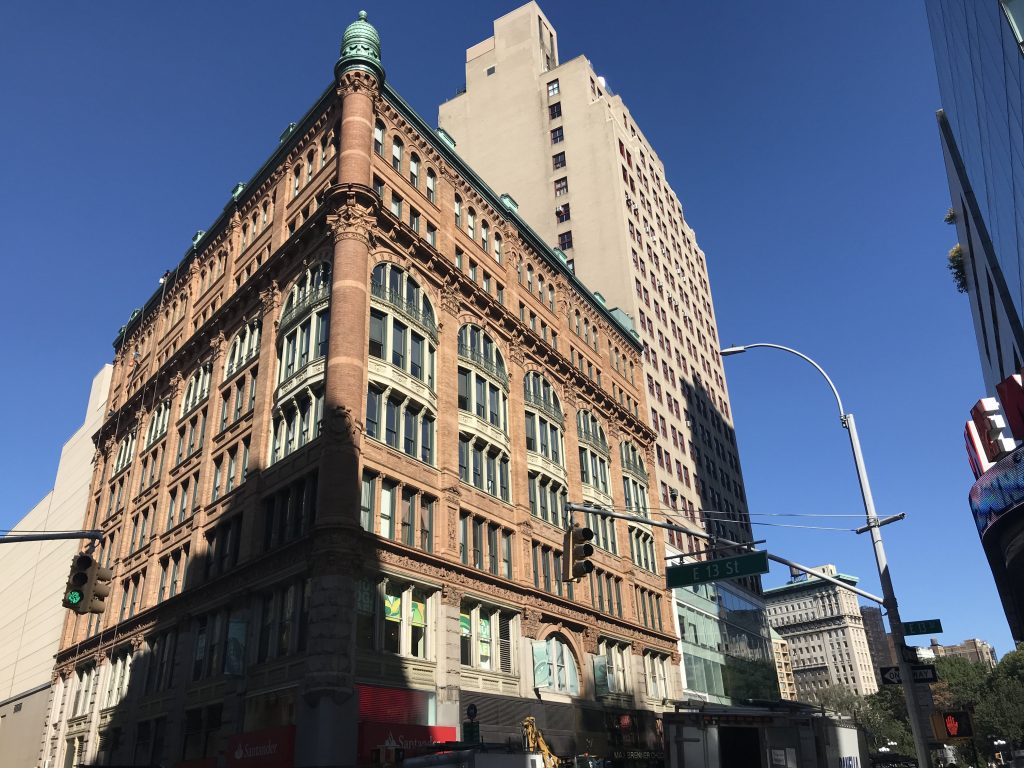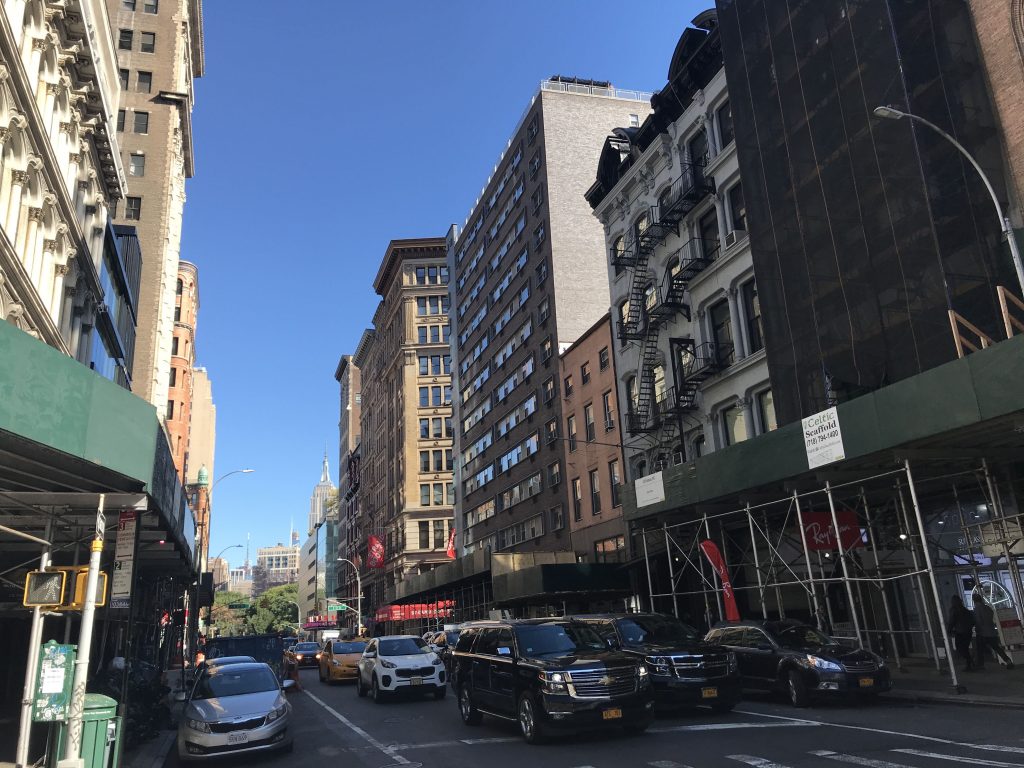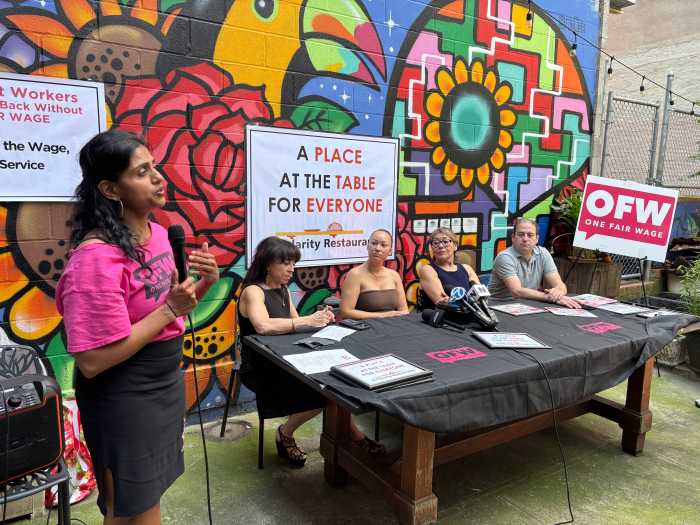
New York City seems to be in a constant tug of war between preserving the old and embracing the new.
While there are so many historic buildings and neighborhoods to be cherished, there is also a push for development and and a plea to consider businesses, especially in Lower Manhattan just below Union Square.
The nonprofit Village Preservation in 2018 requested that the area be landmarked as an historic district but that was rejected by the Landmarks Preservation Commission (LPC), which found the area to have too many buildings that were heavily altered or new. It found a lack of consistent historic qualities for the area to be marked as an historic district, but seven individual buildings between 12th and 14th streets were selected for landmarking in June 2019.
Last month, Village Preservation Executive Director Andrew Berman sent a letter to the LPC, outlining additional historic buildings and contributions from the area that he said should make the LPC reconsider and finally landmark it. Berman cited increasing development concerns that included the in-progress Tech Hub on 14th Street, the recent demolition of the St. Denis Hotel, and a new office tower at 808 Broadway that he argued is out of scale for the area.
He also noted that historic buildings in the area from the 19th and 20th centuries were centers of the publishing industry and social movements including women’s suffrage and workers’ rights. Noted architect James Renwick also lived in the area and built several buildings there, the letter said.
“I think the evidence is irrefutable,” Berman said of the case for landmarking. “I hope the Commission will see it that way.”
As for inconsistencies in the area’s historic buildings, Berman noted similarities to nearby historic districts in Greenwich Village and the Lower East Side that were approved. He said of the area below Union Square, “whether its architecture or history, it seems clear to us that the connections are there.”

Despite seeing the need to preserve these buildings, many argue landmarking creates more burdens for business and property owners, who then have extra layers of bureaucracy to go through if any building repairs or changes are needed.
The Strand Book Store on Broadway and East 12th Street, for example, has been fighting its landmark designation for these reasons.
Landmarks for individual buildings can often be more burdensome, however, than for historic districts. Such district landmarking only applies to building exteriors, which building owners generally need to maintain anyway. There is ongoing debate over the effects of landmarking, and whether they can enhance property values on the one hand or limit potential growth on the other.
“In principle, we believe preserving the aesthetics of the neighborhood is important,” said Andres Pazmino, president of the Greenwich Village Chelsea Chamber of Commerce. But he said it involved the government relinquishing responsibility for maintenance of properties, and adding restrictions on alterations, which add to costs for maintenance and consulting.
“That really affects the bottom line of property owners and business owners,” he said.
He added there can be a false narrative of all business and property owners being billionaires, but many are making just enough to get by.
“We need to help the property owners, especially when they’re small property owners,” Pazmino said.
Some also see it as a choice between preservation and new affordable housing.
“To pit historic districts against affordable housing is a red herring,” said architect Charles Edelstein, president of Edelstein Architecture, PC. The housing in question can often end up being luxury developments.
Berman said landmarking can be good for business and cited Village Preservation studies showing fewer retail vacancies in such areas of the city. He noted there is always some trepidation about landmarking, “but the reality is that landmarked districts thrive.”
Village Preservation did an open survey of the area recently, Berman said, and found an overwhelmingly positive response to landmarking the area. That included property owners, he said, who recognized there would be added regulations but were happy to take them on as long as the plan preserved the overall neighborhood and didn’t just landmark one or two isolated spots.
Berman cited support from residents, property owners and the local community board, and said only the LPC and local Council Member Carlina Rivera weren’t supporting the idea. “That’s definitely a big hurdle and big part of what’s holding us back,” Berman said.
Jeremy Unger, a spokesman for Rivera, said she “continues to work with the community to ensure the history of the Village is preserved and she is meeting regularly with LPC to discuss future protections for her entire district that should be considered.”
And a spokesperson for the LPC the agency will review the additional information sent by the Greenwich Village Society of Historic Preservation regarding a historic district in the area south of Union Square.
Berman said there was a strong case for landmarking the area and his group would be persistent. “We’re not going to give up,” he said, “until we do succeed.”





























